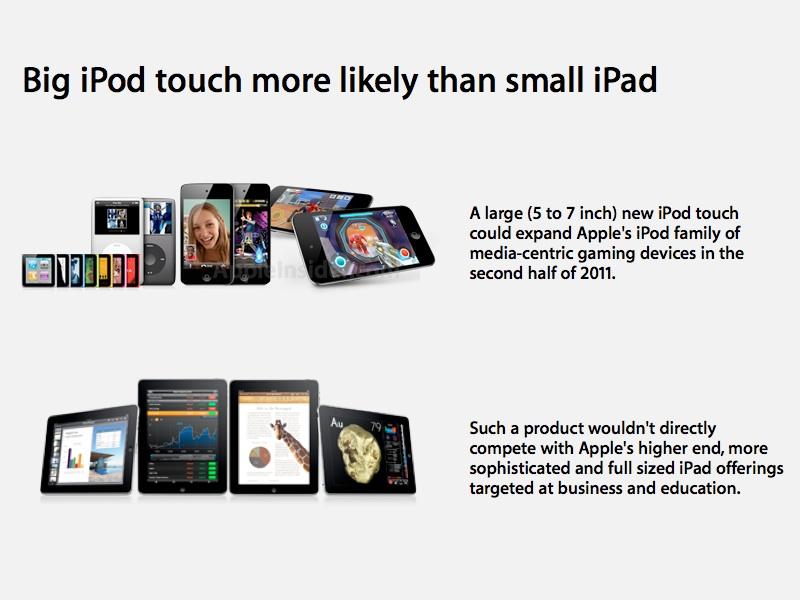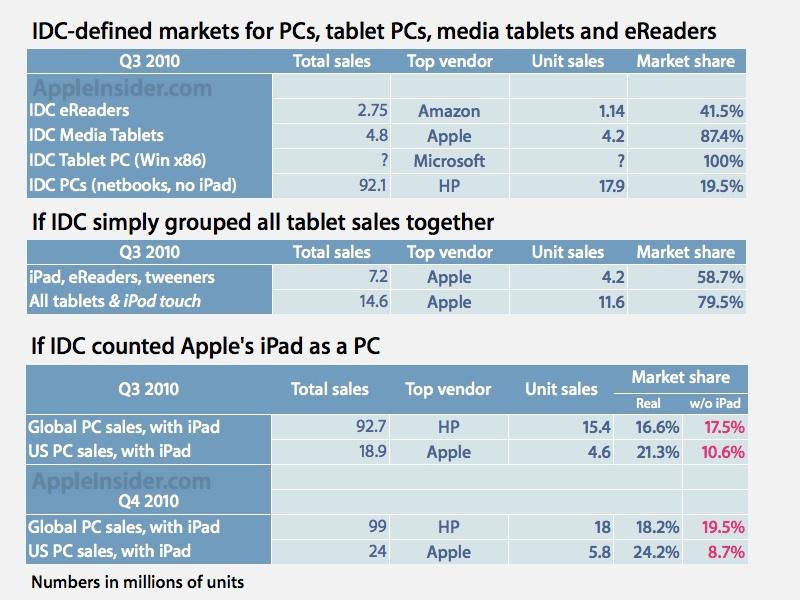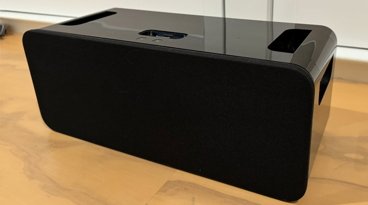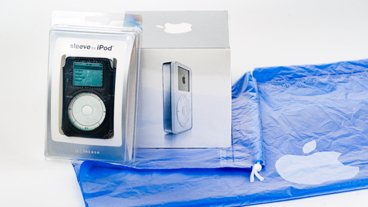iPad 3 with Retina display, new device sized between iPad and iPod in Apple's pipeline
Word of the so-called "tweener" tablet from Apple arrived last month, when Analyst Ming-Chi Kuo of Concord Securities informed AppleInsider of detailed component plans attributed to iPad 2. The analyst also outlined Apple's expected production ratios of WiFi, CDMA and GSM/UMTS iPad 2 models.
iPad 3: double resolution IPS/FFS display
A third point relayed by Kuo was that a successive iPad 3 model would incorporate a 9.7 inch IPS panel with FFS (fringe-field switching) technology, which enables a wider viewing angle and clearer visual quality under in sunlight. Kuo previously reported last May that the upcoming iPhone 4 would incorporate a double resolution, 960x640 display using IPS/FFS, which Apple subsequently released under the name Retina Display. He was also correct in nailing down in advance that iPhone 4 would supply twice the RAM of the iPad.
Kuo now claims that iPad 3 will deliver a Retina Display-like quality and resolution doubling to 2048x1536, an enhancement originally thought to make it into the more immediate release of iPad 2.
However, Kuo told AppleInsider last month that iPad 2 isn't getting the new panel yet because of limited manufacturing yield rates. "At this point," he said in January, "making a high resolution and bright IPS/FFS panel is not easy and the production volume and cost couldn’t meet Apple’s requirements." Upcoming iPad 2 models are instead said to be using a thinner panel with "anti-reflection" to deliver a better experience in bright sunlight.
iPad mini, or big iPod touch
Kuo also described a new iOS device that is undergoing evaluation for a potential release during the second half of 2011, with a screen size between that of the current iPad and the iPhone. Speaking of this new product, Kuo said he was "not sure" whether it would be "a 'Super iPhone' or a 'iPad mini.'" Subsequent speculation by a variety of Apple observers, including a new posting from Vláďa Janeček of Czech site SuperApple, similarly suggest an iPad with a screen close to 6 inches.
Given the company's regular criticisms of competitor's half-sized tablet offerings, Apple will almost certainly not deliver a tweener iPad with a 5 to 7 inch screen size.
However, Apple may be interested in delivering an oversized iPod touch intended to fill the gap between its 3.5 inch, smartphone sized iOS devices and its full sized 9.7 inch iPad.
The company has strongly expressed its contention that "tweener" sized tablets smaller than the iPad are not capable of delivering a real tablet experience. However, there does appear to be a market for oversized smartphones, with some Android models offering 4 inch or larger displays that simply blow up the screen rather than offering more to see. Some consumers, particularly older individuals with limited vision, have expressed keen interest in these larger phones.
With a 5 inch screen, a "big iPod touch" at its existing resolution would offer a 230ppi screen density; stretched across a 7 inch screen the same resolution would deliver 164ppi, still higher than the existing iPad's pixel density of 132ppi. Rather than trying to crush the full sized iPad's resolution into a smaller screen, something Apple's chief executive Steve Jobs quipped last fall would require filing down users' fingers, such a device could simply serve as an expansion of the iPod family, offering a larger view of the simpler iPod touch user interface.
Along similar lines, between 2001 and 2006 Apple offered two iBook models offering the same 1024x768 resolution on either 12.1 and 14.1 inch screens, aiming the larger model at people who simply wanted a bigger view of the same desktop. The company now sells its 15.4 inch MacBook Pro and 13.3 inch MacBook Air with the same 1440x900 resolution.
A 4 to 7 inch iPod touch could serve to expand Apple's iPod offerings, enabling the company to more directly compete with handheld gaming devices by leveraging iTunes media, compatibility with third party apps, and iOS' existing support for features like push email, FaceTime video calling, Game Center, and upcoming features such as expected music and photo cloud features and voice activated assistance services.
On page 2 of 2: Expanding the definition of tablet
Apple's iPod touch is currently not counted as a tablet (not even a "media tablet") by market research firms such as IDC and Gartner, but that practice would be harder to maintain if Apple were to ship a larger version of the device with the same 960x640 resolution.
Other companies, including Dell and Samsung, have delivered devices with lower resolutions on "tweener" sized tablets, which are counted as "media tablets," even though they have found minimal interest among consumers.
A new, larger iPad touch model could potentially deliver an additional competitor to the low end tablet market currently represented by the Samsung Galaxy Tab and Dell Streak, while still remaining well differentiated from the more sophisticated iPad in order to avoid direct competition.
Such a strategy would resemble Apple's efforts to expand the market of the original iPod with the iPod mini, a product which targeted the lower end of flash RAM music players while leaving the iPod to service its original market as a high capacity device.
A big iPod touch would also help differentiate the general purpose, full sized iPad from other smaller, low end tablet devices, forcing them to compete against Apple's media-centric iPod touch rather than being drawn into comparison next to iPad. Both IDC and Gartner group include media-centric tablets as small as 5 inches in the same category as the iPad while completely ignoring the tens of millions of iPod touch devices Apple already sells.
An iPod-branded small tablet strategy would also explain why Kuo cited a delivery target of the second half of 2011, likely coinciding with Apple's fall iPod event rather than being connected to the firm's spring launch of iPad 2 or the summer debut of iPhone 5.
At the launch of the original iPod touch, Apple worked to differentiate the new model with a unique physical design and limited software features compared to iPhone. While the iPod touch continues to be styled as uniquely different than iPhone, Apple has since relaxed its artificial limitations related to functionality, cultivating the product with a focus on gaming. This has resulted in iPod touch sales helping to support the iOS development platform, an element missing from most other smartphone platforms.
 Daniel Eran Dilger
Daniel Eran Dilger












 William Gallagher
William Gallagher
 Malcolm Owen
Malcolm Owen
 Christine McKee
Christine McKee

 Amber Neely
Amber Neely










